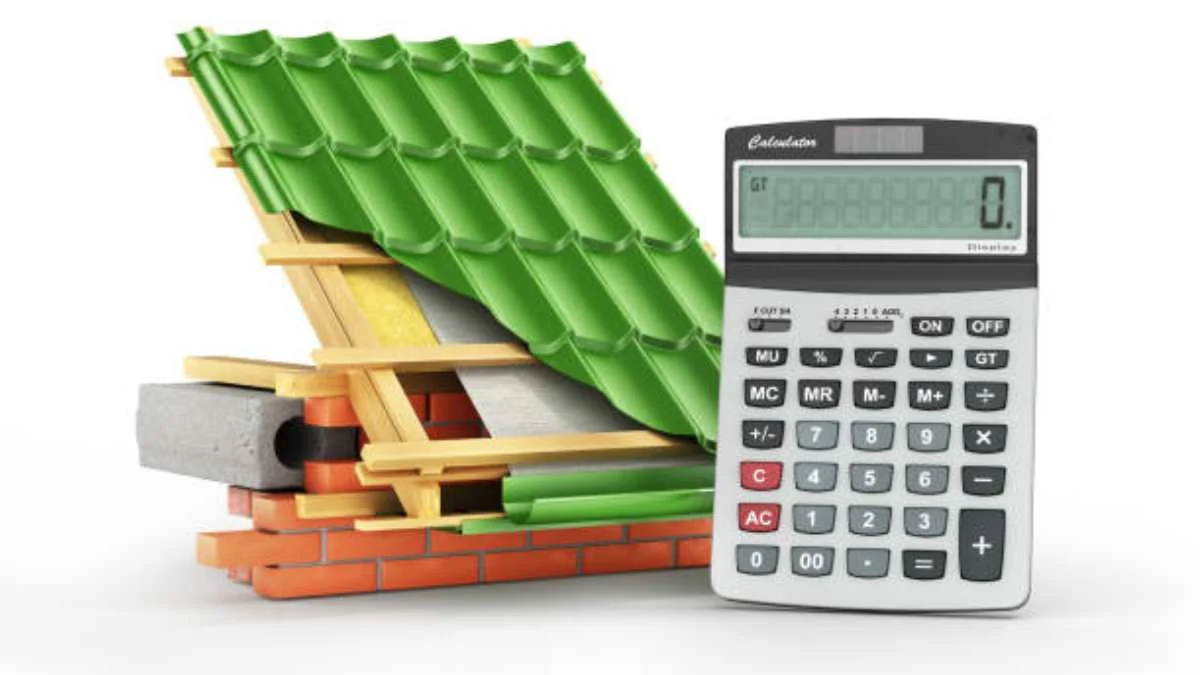HOME IMPROVEMENT
How to Budget for a Roof Replacement: Tips for Financial Planning

Replacing a roof is one of the biggest home investments you’ll ever make—and one of the most important. It’s not something most homeowners budget for regularly, which is why when the time comes, the cost can feel overwhelming. But the good news? With a bit of strategy and forward-thinking, planning and budgeting for a roof replacement doesn’t have to be stressful.
In this guide, we’ll break down a practical, step-by-step approach to budgeting for a new roof—whether it’s something you need immediately due to damage or something you’re anticipating in the next few years.
Step 1: Know What You’re Paying For
The first step in budgeting for a roof replacement is understanding exactly what the cost covers. It’s not just about the shingles or tiles.
Here’s what typically goes into the price:
- Tear-off and disposal of the old roofing materials
- New roofing materials, including shingles, underlayment, and flashing
- Labor costs charged by your roofing contractor
- Ventilation upgrades if needed
- Permits and inspections, depending on local regulations
- Unexpected repairs, such as damaged decking or structural issues discovered during the job
A good roofing company will give you a detailed estimate breaking down each of these elements. Transparency in pricing helps you compare quotes fairly and understand where your money is going.
Step 2: Get a Professional Inspection First
Before assuming the worst, have your current roof evaluated. Not every aging or damaged roof needs a full replacement—some may only need roof repair. An experienced roofing contractor can help assess the condition and provide a report outlining what’s urgent and what can wait.
This inspection will also help determine:
- The scope of work
- Material options suited for your climate and home design
- The timeline and urgency of the project
Getting multiple estimates from reputable roofing companies can help you form a realistic budget range. Don’t forget to ask each contractor if they include disposal fees, underlayment, and other hidden costs in their quotes.
Step 3: Research Material Options and Their Costs
Not all roofing materials come with the same price tag. Asphalt shingles are usually the most affordable and widely used. Metal roofing, tile, and synthetic options come with higher costs—but often longer lifespans.
Here’s a rough idea of what different materials cost per square foot (not including labor):
- Asphalt Shingles: $4–$7
- Metal Roofing: $8–$14
- Tile Roofing: $10–$18
- Synthetic Slate or Shake: $12–$20+
Your budget should reflect not only the cost of installation but the long-term value. Sometimes, a slightly higher upfront cost leads to fewer repairs, better energy efficiency, and longer warranties. That’s why it’s worth discussing multiple options with your roofing company.
Step 4: Factor in the Age and Condition of Your Roof
If your roof is near the end of its lifespan—say, 20 to 25 years for asphalt shingles—starting your budget now is a smart move. Waiting until damage becomes visible could result in urgent repairs, water damage, or structural problems that increase the final cost.
If you still have a few good years left, you can create a long-term savings strategy. Set aside a small amount each month based on your material and labor estimates, so when the time comes, you’re ready.
Strive Roofing & Construction often advises homeowners to treat their roof like a vehicle—regular check-ups, small repairs, and smart financial planning prevent bigger breakdowns later.
Step 5: Explore Financing and Payment Options
You don’t have to pay for a roof replacement all at once. Many roofing companies offer financing options, from low-interest loans to structured payment plans. Others work with third-party lenders that specialize in home improvement projects.
When reviewing financing, ask about:
- Interest rates
- Repayment timelines
- Upfront payment requirements
- Any early repayment penalties
Additionally, some homeowners use personal loans, HELOCs (Home Equity Lines of Credit), or credit cards for all or part of the payment. Whatever option you choose, always compare terms and ensure the payments fit comfortably into your monthly budget.
Step 6: Look for Rebates and Tax Incentives
Depending on where you live and what type of roof you’re installing, you may qualify for rebates or tax credits. Energy-efficient roofing materials, reflective shingles, or upgrades that improve insulation might be eligible for local utility incentives or federal programs.
Ask your roofing contractor if they’re familiar with any current offers in your area. A well-informed roofing company can often help you navigate the paperwork and eligibility requirements.
Step 7: Plan for the Unexpected
Roofing projects occasionally reveal surprises—rotted wood, faulty insulation, or mold hidden beneath the surface. That’s why your budget should include a contingency fund.
A good rule of thumb is to set aside an extra 10–15% of your total estimated cost for unplanned repairs. If you don’t need it, great—but if something unexpected arises, you’ll be ready.
Strive Roofing & Construction encourages homeowners to think beyond the basic estimate. It’s not about inflating the cost—it’s about protecting your home from further damage and ensuring the job is done right the first time.
Step 8: Schedule Strategically
Believe it or not, the time of year can influence your roofing costs. Spring and summer tend to be peak seasons, so prices might be higher due to demand. If your project isn’t urgent, consider scheduling during off-peak months like late fall or early winter when crews have more availability and prices are slightly lower.
Discuss timelines with your contractor. They may even offer a discount for flexible scheduling.
Step 9: Review the Contract Carefully
Before signing anything, review your contractor’s agreement in detail. Make sure it includes:
- A full cost breakdown
- Scope of work
- Warranty terms
- Estimated start and finish dates
- Payment schedule
Avoid vague language like “as needed” or “if necessary” unless clearly defined. If anything is unclear, ask for clarification in writing.
Final Thoughts
Replacing your roof is a big financial decision—but it doesn’t have to be a stressful one. With smart planning, the right information, and help from a trusted roofing company, you can manage the process with confidence.
Budgeting is more than just counting dollars. It’s about understanding value, being proactive, and preparing for the future. Whether you’re replacing a roof tomorrow or two years from now, the time to start planning is today.
By partnering with experienced professionals like Strive Roofing & Construction, you’ll not only get expert craftsmanship but also the guidance to make financially sound choices from day one.
-

 BIOGRAPHY7 months ago
BIOGRAPHY7 months agoBehind the Scenes with Sandra Orlow: An Exclusive Interview
-

 HOME1 year ago
HOME1 year agoDiscovering Insights: A Deep Dive into the //vital-mag.net blog
-

 HOME1 year ago
HOME1 year agoSifangds in Action: Real-Life Applications and Success Stories
-

 BIOGRAPHY1 year ago
BIOGRAPHY1 year agoThe Woman Behind the Comedian: Meet Andrew Santino Wife




























